Bacteria are the ones that have only one cell and are also pretty much seen in all the places be in in or out the body or environment.
The organism that are called to be producers are the ones that makes its own food just like the plants. Thus in this case, with concern to the question for are bacteria producers, yes they are also producers in many of the ecosystems.
The producers to take up the whole of the ecosystem to make food an also helps in supporting the animal by eating the plants or also in turn supports the carnivores. With all of the facts stating are bacteria producers true, fungi and bacteria can also be called as consumers and also the decomposers. They act as three in one system.
In also many of the cases, there is a human living in symbiosis with the bacteria making it also a good producer with stating the fact are bacteria producers true. They help in getting a balanced relation with the humans without realizing this notion of how useful they can be. The ones that are bacteria producers do have an inner structure that is unique.
The eukaryotes are all the multicellular microbes and the humans that have more than one nuclei having a membrane. The bacteria are called to be the prokaryotes which also mean that they do organize the nuclei and also many other membranes bound organelles. The DNA of the bacteria floats freely in the cell and is twisted like a mess of thread like look called the nucleoid.
Some of them also do have a separate piece of circular DNA called to be the plasmids. They also sometimes keep the genes that also give a good survival reach to the bacteria that are bacteria producers and also make them antibiotic resistance. Sometimes with regards for are bacteria producers also a confusion for the prokaryotes can be seen.

Are bacteria producers mostly?
Producers are just not the one that make their own food but also are the ones that act as the chef for the whole ecosystem.
It helps in supporting the animals in many ways with itself having no much role for itself and also there will be none left without the bacteria or producers. Thus the statement for are bacteria producers is false being only two types being so.
The ones that tend to take energy to makes it food fir living from the support of rest are called the consumers. All animals are called so and also eat others for survival. Bacteria is also a consumer with being a producer to. There are many bacteria that do photosynthesis by sing the light from sun and carbon dioxide just like the plants and thus also do chemosynthesis.

The ones that are producers use up the name for being photosynthetic bacteria and are much simpler than the plants. They di nit have compartments to carry out work yet make its own food, thus the statement for are bacteria producers is not correct. They use the chemicals I order to make food. Plants do use up a pigment called chlorophyll to make food.
Just like the plants, the photosynthetic bacteria also make its own food having the same sort of pigment like plants called as bacteriochlorophyll that allows them to absorb light. Other such bacteria like the cyanobacteria use up same compound like chlorophyll called the phycocyanin to make food. Also, thus making the statement for are bacteria producers is not true except few.
What type of bacteria are producers?
There are cyanobacteria that makes their own food along with the green algae and are seen in the start of the food chain.
These are thus said to be the basic producers as it can make its own food, making the statement for are bacteria producers is false. The basic producers include the moss, the algae, the lichens with green algae and cyano being a part.
The green algae are a part of the producers bacteria that include the Prasinodermophyta and is a sister of the Chlorophyata and are also single celled. Having filament to move, tubular and also colonial in its form. The members of it can be either multicellular to even unicellular yet being a bacterial type.
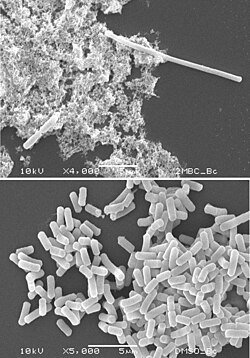
The other type making the statement for are bacteria producers is wrong is the cyanobacteria that is photosynthetic and aquatic. As they are bacteria they are much small and also are unicellular with them often being the colonies that are large to be witnessed. In the area of marine type. They are good producers making the statement for are bacteria producers is false.
Filamentation, also termed conditional filamentation, is the anomalous growth of certain bacteria, such as Escherichia coli, in which cells continue to elongate but do not divide means no septa formation. The cells that result from elongation without division have multiple chromosomal copies. Filamentation can be induced by the inhibition of cell division via exposure to antibiotics that inhibit divisome assembly or septal peptidoglycan synthesis.
Are bacteria primary producers?
In the ecosystem of the terrestrial world, the basic producers live in or around the organic matter for they are not mobile.
This is so as there are scope for the trees to get nutrients to help them sustain themselves along with moss, algae, the small plants, lichen and also bacteria. Thus makes the statement for are bacteria producers is false.
Bacteria can also be herbivores along with the mites, fungi, the slugs, the worms and snails. Thus they can be called the level one primary consumers as well. They also tend to eat each other for energy and the nutrients needed. The primary producer is the one that tend to only make its own food along with serving to be useful to rest. Bacteria are single-celled, or simple, organisms that are invisible to the naked eye.

Some of the bacteria do live in harsh states and also the body of human is full of the bacteria along with the fact that it is seen in more number than that of human cells. They are microscopic and also stay in and out of the organism body. They do sometimes make its own food being the statement for are bacteria producers is false and also can be consumer or decomposer. Bacteria are also found on surfaces and in substances like water, soil, and food.
Are bacteria secondary producers?
The secondary production inside the ecosystem is the concept f having the population measured using a technique.
The production of secondary organism is the making of the loving mass of all the population that is heterotrophic or a group of populations over a certain time period This is same as that of the net primary making by the autotrophs.
The producers are the organism that tend to make its own food and also do chemically do it and tend to be the building blocks of the food chains. Thus, the statement for are bacteria producers is not correct along with the bacteria not being the secondary producers. A food chain is a complete connection linking the food web. The producers are eaten by predators.
After eaten by them the detrivores or the heterotrophs consume them along with decomposers. When there are several other food chains seen in the ecosystem it is called as food web. The animal that eat the plants are called as secondary producers which makes bacteria incapable and thus the statement for are bacteria producers is partial correct. Predators are adapted and often highly specialized for hunting, with acute senses such as vision, hearing, or smell.

Types of bacteria producers
There can be categories like producers, heterotrophs, consumers and decomposers with producer being the base.
The producers help support not only themselves by making its own food but also tend to support there by eating the herbivores that in turn help the carnivores with its sustenance. Some example are shrubs, algae and bacteria.
Some other types of producers can be the algae, the seaweed, the diatoms, the sea lettuce, cladophora, the rhodophyta and brown algae. With concern to the statement for are bacteria producers being true there are two specific types that are good for being such- Cyanobacteria and also Green algae. The two major are chemotropism and phototrophs.
The green algae are a group consisting of the Prasinodermophyta and its unnamed sister which contains the Chlorophyta and Charophyta or Streptophyta. The land plants also Embryophytes have emerged deep in the Charophyte alga as sister of the Zygnematophyceae. Since the realization that the Embryophytes emerged within the green algae, some authors are starting to properly include them.

Producer bacteria characteristics
Some of the bacteria tend to sue the light from the sun to make its own food with the rest suing inorganic stuffs to live.
The organism that cannot make its own food is called the consumers. The producers can be good defined by green plants making the viral part of ecosystem. Bacteria is also one of it making the statement for are bacteria producers is false.
Primary producers in a terrestrial ecosystem live in and around organic matter. Since they are not mobile, they live and grow where there are nutrients to sustain them. They take nutrients from organic matter left in the soil by decomposers and transform them into food for themselves and other organisms. Producers are organisms that create food from inorganic matter. The best examples of producers are plants, lichens and algae.
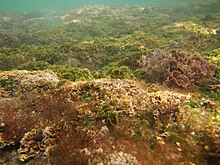
The trait or characteristic of bacteria as producers and making the statement for are bacteria producers is false are-
- It makes its own food by taking energy from light, soil and air.
- Have pigment like chlorophyll called the bacteriophyll
- They are self feeds also being on that supports the rest of the organism to love by making food for them in the bottom of the food chain.
- All of the plants are few of the bacteria are producers.
Where is bacteria in food chain?
A food chain is a linear network that connect in the food web and starts from the ones that are producers ending with predator.
Thus with the statement for are bacteria producers is partial true with only cyanobacteria and green algae being the producers, the bacteria are seen at the base of all the food chains showing a different trophic level. This is just in case of two types.
In the whole of the classification of the organism, bacteria are called to be the decomposers which states that the place of them in the food chain is in the top most level that helps in converting of decaying plants or animal matter into inorganic waste that helps in making the soil rich. They return back to soil for the help of autotrophs.
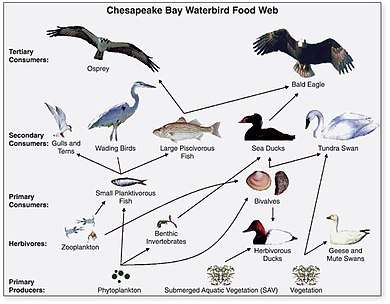
Bacteria are said to be the tiny ones that are much good at absorbing of the mineral nutrients from the surrounding so that they are at the lowest of the food chain at all planet. They help absorbing of the nutrients with some beimg producers and some decomposers thus the statement for are bacteria producers is partial true with only cyanobacteria and green algae being the producers.
How are bacteria producers?
There are several types of ecosystem in the planet with different organism being the part of different trophic levels.
They make its own food with also helping the rest to live making themselves a producer. Some of the bacteria are decomposers that make the statement for are bacteria producers is partial true with only cyanobacteria and green algae being the producers.
After the plants, the next most in number in terms of biomass is the bacteria. They are seen at all places with certain thriving to be only specific too few of the regions. They help in getting the metabolites biosynthesizes and help in the cell functions for many eukaryotes with offering specific benefit under certain situations. The name cyanobacteria refers to their color giving them their other name, “blue-green algae”.
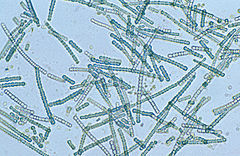
What does bacteria produce?
In this process the bacterium, which is a single cell, divides into two identical daughter cells. Binary fission begins when the DNA of the bacterium divides into two.
Bacteria contain ribosomes for the production of proteins, but the structure of the bacterial ribosome is different from that of eukaryotes and archaea. Some bacteria produce intracellular nutrient storage granules, such as glycogen, polyphosphate, sulfur or polyhydroxyalkanoates.
Microbial toxins are toxins produced by microorganisms, including bacteria and fungi. Microbial toxins promote infection and disease by directly damaging host tissues and by disabling the immune system. Some bacteria are good for you, including the bacteria in your digestive system, or gut. These bacteria help to break down food and keep you healthy. Other good bacteria can produce oxygen are used to create antibiotics.

Which bacteria is not producer?
It is popularly called as mushroom. Whereas Spirogyra, is a green algae and an eutotrophs, i.e., producer Nostoc and Volvox are que-green algae or cyanobacteria and are also a producer.
Agaricus is a fungus , it is a achlorophyllus and not a producer . It has saprophytic mode of nutrition. To survive, ecosystems need a constant influx of energy. Energy enters ecosystems in the form of sunlight or chemical compounds. Some organisms use this energy to make food. Other organisms get energy by eating the food.

Fungi and many protists and bacteria are also consumers. But, whereas animals eat other organisms, fungi, protists, and bacteria “consume” organisms through different methods. The consumers can be placed into different groups, depending on what they consume. Herbivores are animals that eat producers to get energy. This makes are all bacteria producers false. That chemical energy is then distributed to all other living organisms in the ecosystem.
Producer bacteria case
The human body is full of bacteria, and in fact is estimated to contain more bacterial cells than human cells. Some species can live under extreme conditions of temperature and pressure.
These organisms are called producers because they produce their own food. Some animals eat these producers. These animals are called consumers because they consume something else to get their food. This makes bacteria a producer being few in number and are bacteria producers partially true.
Algae, higher plants, and some bacteria and protists are important autotrophs in running waters. Heterotrophs obtain energy and materials by consuming living or dead organic matter. These organisms are called producers because they produce their own food. The different types of producers include: Executive producer, Associate producer, Producer. they are also known as autotrophs.
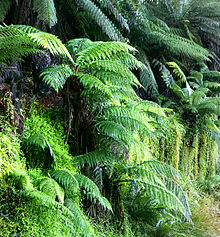
They get energy from chemicals or the sun, and with the help of water, convert that energy into useable energy in the form of sugar, or food. This energy is captured by plants. Thus the living part of a food chain always starts with plant life and ends with an animal. Plants are called producers because they are able to use light energy from the sun to produce food from water. The most common example of a producer are plants.
Also Read:
- Allosteric enzyme examples
- Does lysosome have membrane
- Enzymes in hydrolysis
- Imperfect fungi examples
- Lactose fermenting bacteria examples
- Archaea examples
- Are algae protists
- Genetic diversity examples
- Ecosyetm examples
- Specialist species examples
I am Ankita Chattopadhyay from Kharagpur. I have completed my B. Tech in Biotechnology from Amity University Kolkata. I am a Subject Matter Expert in Biotechnology. I have been keen in writing articles and also interested in Literature with having my writing published in a Biotech website and a book respectively. Along with these, I am also a Hodophile, a Cinephile and a foodie.

Hi Fellow Reader,
We're a small team at Techiescience, working hard among the big players. If you like what you see, please share our content on social media. Your support makes a big difference. Thank you!